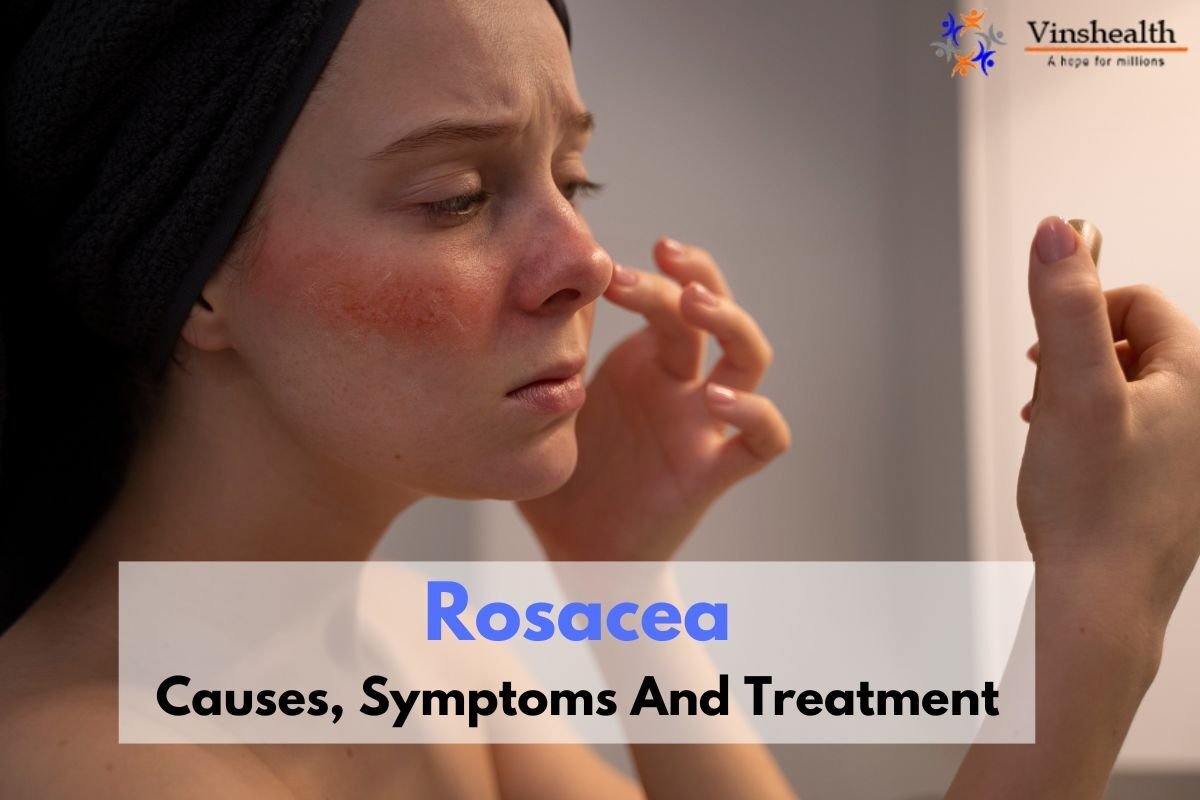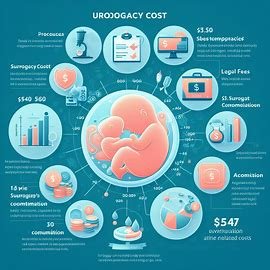Rosacea: Causes and Treatment
- 2023-08-29
- rosacea treatment, rosacea causes, reatment for rosacea
Rosacea is a skin disease that affects millions of people throughout the world. It mainly impacts the face and can lead to redness, visible blood vessels, and sometimes even painful bumps. In this article, we will delve into the various aspects of rosacea, including its symptoms, causes, risk factors, diagnosis, rosacea treatment options, potential complications, and conditions that may resemble it.
Table of Content
- What is Rosacea?
- Rosacea Symptoms
- Rosacea Causes
- How is rosacea diagnosed?
- Other Conditions That Can Look Like Rosacea
- Treatment for rosacea
- What are the complications of rosacea?
What is Rosacea?
Rosacea is a chronic skin disorder that causes redness and visible blood vessels, particularly on the cheeks, nose, forehead, and chin. It can also create tiny, red, pus-filled pimples on the skin. This condition tends to come and go, with flare-ups followed by periods of improvement.
Rosacea Symptoms
Symptoms can vary widely from person to person, but common signs and symptoms of rosacea include:
- Flushing: Skin turns red, often after exposure to triggers like spicy foods or sunlight. Blood vessels near the surface of the skin become more visible.
- Persistent Redness: Skin stays red, especially on the nose, cheeks, forehead, and chin. Sometimes mistaken for a sunburn.
- Bumps and Pimples: Small red bumps and pus-filled pimples appear on the face. Can look like acne, but it's not the same.
- Visible Blood Vessels: Small blood vessels called spider veins or telangiectasia become visible on the face.
- Burning or Stinging: Skin might feel hot, tight, or uncomfortable. Some people describe it as a burning or stinging sensation.
- Dry, Rough Skin: Skin can become dry, flaky, and rough due to inflammation.
- Swelling: Facial swelling, especially on the nose. This is more common in men and is called rhinophyma.
- Eye Irritation: Eyes might feel gritty, dry, or watery. This is known as ocular rosacea and can lead to redness and irritation.
- Enlarged Nose: In some cases, the nose may become swollen and bulbous. This is a rare complication.
Rosacea shows redness, bumps, and swelling on the face, often triggered by certain factors. It might cause discomfort and impact emotions. If you suspect you have rosacea, consulting a doctor is advised for proper diagnosis and management.
Rosacea Causes
Rosacea is a skin condition. It happens when blood vessels in your skin get bigger and your face becomes red. Here are some of the causes why this occurs:
- Genetics: Your family history can make you more likely to have rosacea. If your parents or grandparents had it, you might get it too.
- Bacteria: Tiny living things called bacteria can live on your skin. Sometimes, they might cause your skin to flare up and become red.
- Mites: There are super tiny bugs called mites that live on your skin. They usually don't cause problems, but in some people, they might make rosacea worse.
- Sunlight: Too much sunlight can hurt your skin and make rosacea worse. It's good to use sunscreen and wear hats when you're outside.
- Spicy Food and Drinks: Eating really spicy things or drinking hot beverages can make your skin turn red if you have rosacea.
- Alcohol: Drinking alcohol, especially wine and hard drinks, can also cause your skin to get red and make rosacea worse.
- Heat and Cold: Extreme temperatures, like very hot weather or cold wind, can bother your skin and trigger rosacea.
In the end, it's important to know that rosacea can be caused by a combination of these things. If you think you have rosacea, it's smart to talk to a doctor. They can help you figure out what's causing it and how to treat it.
How is rosacea diagnosed?
Diagnosing rosacea involves a combination of clinical evaluation, medical history assessment, and other skin conditions that might mimic its symptoms. It's important to consult a dermatologist for an accurate diagnosis and appropriate treatment plan. Here's how rosacea is typically diagnosed:
Medical History and Symptoms: The dermatologist will begin by discussing your medical history and asking about your symptoms. Common symptoms of rosacea include persistent facial redness, flushing, visible blood vessels (telangiectasia), and often, papules and pustules resembling acne. It's important to provide detailed information about when your symptoms started, how they've progressed, and any triggers that exacerbate them.
Clinical Examination: A dermatologist will conduct a thorough physical examination of your skin. They will carefully assess the pattern and extent of redness, examine any papules or pustules, and look for signs of visible blood vessels. The presence of these features, especially if they're concentrated in the central areas of the face (cheeks, nose, forehead, and chin), can be indicative of rosacea.
Differential Diagnosis: Some skin conditions can mimic the symptoms of rosacea, such as acne, lupus, seborrheic dermatitis, and allergic reactions. To ensure an accurate diagnosis, the dermatologist will rule out these possibilities by carefully considering your medical history, symptoms, and the appearance of your skin.
Additional Tests: In some cases, the dermatologist might recommend additional tests, particularly if there's uncertainty in the diagnosis or if there are concerns about potential underlying conditions. These tests can include skin biopsies to examine tissue samples under a microscope or blood tests to rule out systemic conditions that might be contributing to the skin symptoms.
Triggers and Patterns: Dermatologists often inquire about potential triggers that worsen your symptoms. Common triggers for rosacea include exposure to sunlight, hot or cold weather, spicy foods, alcohol, and certain skincare products. Identifying and avoiding these triggers can aid in the management of the illness.
It's important to note that rosacea can vary widely in its presentation and severity among individuals. A customized treatment plan can be developed based on the specific subtype and severity of rosacea. Early diagnosis and management are key to controlling symptoms and preventing the progression of the condition. If you suspect you have rosacea, seeking consultation with a dermatologist is recommended for an accurate diagnosis and tailored treatment approach.
Other Conditions That Can Look Like Rosacea
Certainly, there are several other skin conditions that can mimic the symptoms of rosacea due to their similar presentation. It's important to differentiate between these conditions, as proper diagnosis is crucial for effective treatment. Here are some other conditions that can resemble rosacea:
- Acne
- Lupus
- Allergies
- Eczema
- Seborrheic Dermatitis
- Perioral Dermatitis
- Psoriasis
- Contact Dermatitis
- Flushed Skin
- Demodex Mites
It's important to consult a dermatologist for a proper diagnosis if you're experiencing persistent facial redness or other skin symptoms. A dermatologist can differentiate between these conditions based on their characteristic features, triggers, and sometimes, through diagnostic tests.
Treatment for rosacea
Dermatologists play a crucial role in diagnosing and managing rosacea, offering a variety of treatment options tailored to each patient's specific needs. In this article, we will explore the various approaches dermatologists use to effectively treat rosacea.
Topical Treatments
Dermatologists often begin rosacea treatment with topical medications. These can include:
- Topical Antibiotics: Creams or gels containing antibiotics like metronidazole or azelaic acid can help reduce inflammation and control the bacteria associated with rosacea.
- Topical Retinoids: These derivatives of vitamin A help unclog pores and reduce inflammation, contributing to smoother skin and fewer flare-ups.
- Topical Steroids: In some cases, short-term use of low-potency topical steroids might be prescribed to quickly reduce redness and swelling.
Oral Medications
- Oral Antibiotics: Dermatologists might prescribe oral antibiotics like doxycycline, minocycline, or tetracycline to control inflammation and reduce the number of pimples and bumps associated with rosacea.
- Isotretinoin: For severe cases, isotretinoin, a potent oral medication, may be recommended. It can help shrink oil glands and improve skin texture, but it requires close monitoring due to potential side effects.
Laser and Light Therapies
- Intense Pulsed Light (IPL): IPL uses light energy to target and destroy visible blood vessels and reduce redness associated with rosacea.
- Pulsed Dye Laser: This laser specifically targets the blood vessels causing redness and effectively reducing their appearance.
- Fractional Laser Therapy: This treatment improves skin texture and reduces redness by stimulating collagen production and remodeling damaged tissue.
Skin Care Recommendations
Dermatologists also guide patients on appropriate skincare routines to manage rosacea effectively. Recommendations might include:
- Gentle Cleansers: Dermatologist-approved cleansers that do not strip the skin of its natural oils or exacerbate irritation.
- Sun Protection: Broad-spectrum sunscreen with high SPF to shield sensitive skin from UV rays, a common trigger for rosacea flare-ups.
- Avoid Triggers: Dermatologists educate patients about potential triggers like spicy foods, alcohol, and extreme temperatures that can worsen rosacea symptoms.
Personalized Treatment Plans
One of the most important roles of dermatologists is crafting individualized treatment plans. Rosacea can manifest differently in each patient, requiring a tailored approach that addresses their specific concerns and triggers.
What are the complications of rosacea?
While there is no cure for rosacea, various rosacea treatment options are available to manage its symptoms and prevent complications. However, if left untreated or improperly managed, rosacea can lead to several complications that can impact a person's quality of life and self-esteem.
Persistent Redness and Swelling: Without proper rosacea treatment, the redness and swelling on the face can become more pronounced and consistent. This can lead to increased self-consciousness and psychological distress.
Telangiectasia (Visible Blood Vessels): Over time, the small blood vessels on the face, known as telangiectasia, can become more prominent and visible. These blood vessels may appear as thin red lines on the skin and can be difficult to conceal.
Papules and Pustules: Some individuals with rosacea experience papules and pustules similar to acne. If these are not treated appropriately, they can lead to scarring and hyperpigmentation.
Ocular Complications: Ocular rosacea affects the eyes, causing symptoms like dryness, redness, itching, and a gritty sensation. Left untreated, it can lead to more severe eye conditions, including inflammation of the cornea and eyelid margins.
Rhinophyma: In rare cases, rosacea can lead to rhinophyma, a condition where the nose becomes enlarged, bulbous, and red due to excess tissue growth. This is more common in men and often requires surgical intervention for correction.
Emotional and Psychological Impact: The visible symptoms of rosacea can significantly impact a person's self-esteem and emotional well-being. Social discomfort and anxiety related to the appearance of their skin can lead to a decreased quality of life.
Secondary Infections: Scratching and manipulating affected skin can lead to breaks in the skin barrier, making it more susceptible to bacterial infections. These infections can exacerbate the skin's condition and require medical attention.
Skin Sensitivity: Rosacea-prone skin tends to be more sensitive and reactive. Without proper care, exposure to triggers like sun, wind, spicy foods, alcohol, and certain skincare products can exacerbate symptoms and discomfort.
Delayed Diagnosis and Treatment: If rosacea is misdiagnosed or left untreated, the condition can worsen over time. Early intervention and proper management can prevent complications and improve outcomes.
To avoid these complications, individuals with rosacea should work closely with dermatologists to develop a personalized treatment plan that addresses their specific symptoms and triggers. Treatment approaches can include topical and oral medications, laser therapy, lifestyle modifications, and effective skincare routines. The goal is to manage symptoms, prevent flare-ups, and enhance the patient's overall skin health and well-being.
Frequently Asked Questions (Rosacea)
Q1: Is rosacea a common skin condition?
A1: Yes, rosacea is a common skin disorder that affects many people worldwide. It often causes facial redness, visible blood vessels, and sometimes acne-like bumps.
Q2: What are the typical symptoms of rosacea?
A2: Common symptoms of rosacea include facial redness, stinging or burning sensations, visible blood vessels, and small red bumps. In some cases, the eyes may become dry and irritated.
Q3: What causes rosacea?
A3: The exact cause of rosacea is unknown, but factors like genetics, immune system reactions, and skin mites are believed to play a role in its development.
Q4: Who is at risk for rosacea?
A4: Fair-skinned individuals, those with a family history of rosacea, females, and people over 30 are at a higher risk. Environmental factors like sun exposure and certain foods can also trigger flare-ups.
Q5: How is rosacea diagnosed?
A5: Dermatologists diagnose rosacea based on its distinct appearance and by ruling out other conditions. No specific tests exist, so a thorough evaluation of symptoms and medical history is crucial.
Q6: Can other conditions be mistaken for rosacea?
A6: Yes, conditions like acne, lupus, and seborrheic dermatitis can resemble rosacea. A healthcare professional can differentiate between them to ensure accurate treatment.







Thanks for the valuable information.
2023-01-05 00:00:00